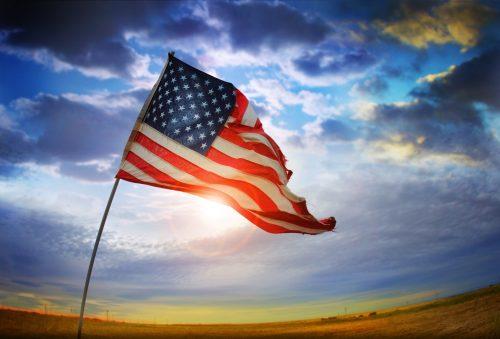
CWP Blog | CWP
Labor Day, Recognizing Workers’ Contributions and Improving Working Conditions
August 27, 2024
August 27, 2024
CWP
CWP Blog
Implications for workers in the nuclear defense industry
For most people, Labor Day signifies the unofficial end of summer. It is a day filled with picnics and barbecues to signal the upcoming changing of the seasons.
When researching the history of Labor Day in the U.S., however, it becomes quickly evident that the national holiday is about a much more serious subject with roots that date back more than 130 years. In 1894 President Grover Cleveland made it a federal holiday to recognize laborers’ contributions to the country’s growth and the ongoing battle to improve health and safety at work in America.
President Biden, as part of his first Labor Day proclamation from the White House in 2021, reiterated the importance of hard-working Americans in creating the backbone of our country. As part of his proclamation, he stated that every worker deserves fair wages and benefits, freedom from discrimination, and a safe and healthy workplace.
The desire for safe working conditions hits close to home for nuclear defense workers
Few labor groups likely understand the need to address unsafe working conditions better than those working in the nuclear defense industry. As the result of a lack of adequate protections, hundreds of thousands of these workers have become ill over time due to exposure to radiation and other toxins. Many have passed due to work-related exposure and illnesses.
That’s why Congress established the Energy Employees Occupational Illness Compensation Program Act (EEOICPA) in 2000 to provide benefits to individuals who became sick or died from this work, as well as their families. To date, EEOICPA has provided more than $22 billion total in compensation, health care benefits and survivor benefits to approximately 135,000 claimants, far exceeding original estimates for the program. There are still many nuclear weapons and uranium workers who may qualify and have yet to file for benefits they earned.
Although October 30th is the Official Cold War Patriots National Day of Remembrance™ specifically created to recognize and honor our brave, hard-working nuclear defense workers, we also find it appropriate to recognize the historic contributions of and risks to American workers by reflecting on the unique sacrifices of our nuclear defense workers on Labor Day.
Some industry experts have rightfully claimed that World War II defense industry jobs could be more dangerous than serving on the front lines. Between 1942 and 1945, the Bureau of Labor Statistics reported more than 2 million disabling industrial injuries (including deaths) each year.
While working at Hanford, Los Alamos, or one of the many other national nuclear sites, nuclear weapons workers including uranium miners, millers and haulers, and plutonium producers, did not receive adequate protection from occupational hazards. As a result, workers were exposed to beryllium, ionizing radiation and other hazards unique to nuclear weapons production and testing, and many developed serious illnesses.
Why did it take so long to better protect our nation’s nuclear defense workers?
To best understand why nuclear defense workers were not properly protected for many years, it’s necessary to go back in time and remember the political climate of that era. We were at war. And we were in a life-or-death race to be the first country to create an atomic bomb. Because of ongoing pressure from the government and military, nuclear defense plants prioritized efficiency and productivity over safety.
To maximize production, nuclear weapons and uranium workers were brought in for two to three shifts per day. This left little time for maintenance. Working longer hours at a faster pace also strained older machines that had been quickly modified. To make matters worse, some companies became lax with safety code enforcement. And there was no one looking over shoulders since, unlike any other industry, the organizations involved in the Manhattan Project, an allied effort that developed the world’s first atomic weapons, were given unique self-regulating responsibilities when it came to worker safety.
That’s not to say that such neglect was always intentional. At the time, less was known about the fact that radiation exposure can increase the risk of cancer than we know today. Contractors had little experience dealing with radiation, and no one had experience dealing with massive amounts of radioactivity. Even industrial scientists and engineers possessed minimal knowledge of the effects of significant radiation doses.
That’s why it was common to see facilities like Los Alamos in New Mexico surrounded by high barbed-wire fencing and armed guards to keep people out and protect precious secrets but few physical protections for the workers inside.
More worker safeguards today
It took decades before worker safety was prioritized but, beginning in 2001, regulations were enacted to require more training for workers handling hazardous radioactive materials. In the past few decades there has also emerged more regular monitoring of air quality and personnel health, as well as greater use of specialized protective equipment and countermeasures such as shielding.
But at many of these nuclear defense sites, the damage has already been done. At the Hanford site in Washington, for example, radioactive waste contaminated an estimated 200 square miles of groundwater, making Hanford the most radioactive place in the United States as of September 2017.
This Labor Day, as we’re throwing another burger on the grill, hopefully Americans take a moment to reflect on the contributions and sacrifices of all of America’s workers who made possible the lives we live today.
To join Cold War Patriots and discuss the resources available to qualified nuclear weapons and uranium workers, call our Outreach Help Center at 855-230-1339 Monday through Friday, 7 a.m. to 5 p.m. mountain time, or email us at [email protected].
